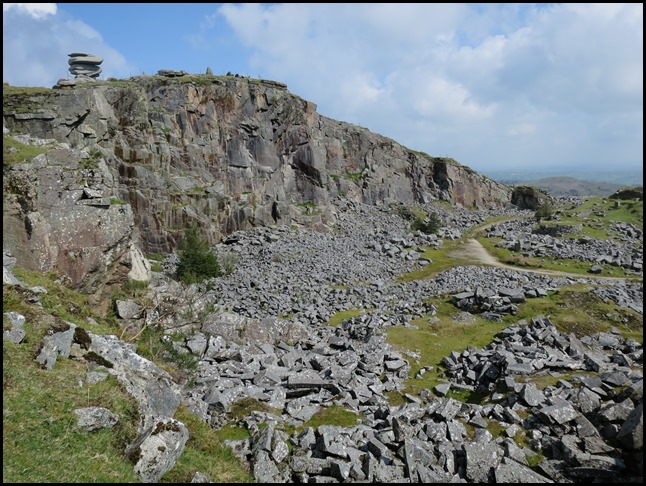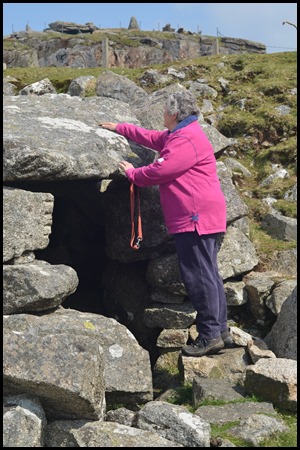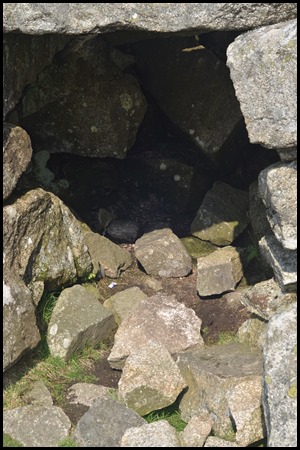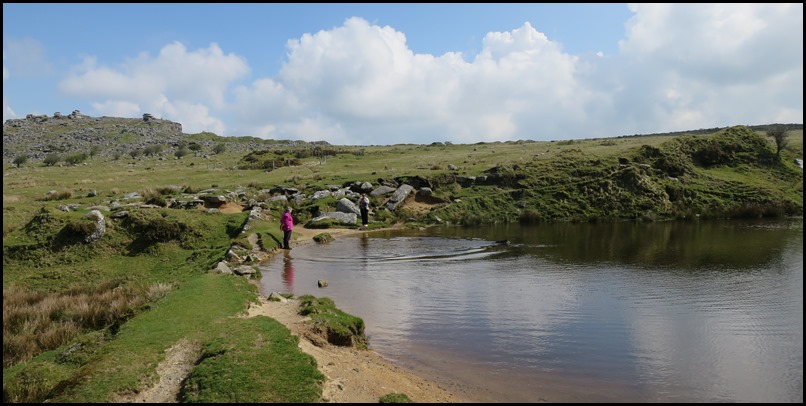A Gentle Bimble

|
A Gentle Bimble with Good
Friends
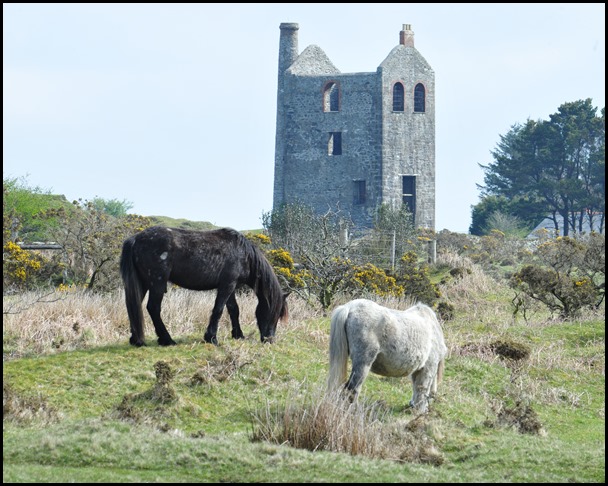 Bodmin
Moor has always seemed much ‘softer’ to me than Dartmoor which always
conjures up images of Miss Haversham, swirling mist, the gloomy prison and the
Hound of the Baskerville. Bodmin somehow seems more rolling and ‘sunny’.
 No visit to Bodmin Moor is complete
without King Arthur, Sean Connery and Richard Gere popping into my thoughts.
Think of men in shining armour and Dozmary
Pool
springs to mind as it is identified by many as the lake in which, according to
Arthurian
legend, Sir
Bedivere
threw Excalibur
to Nimue, the Lady of the
Lake. There is also the Beast of Bodmin Moor to
consider, still you wouldn’t want to walk here at night with the marshes
and ditches.
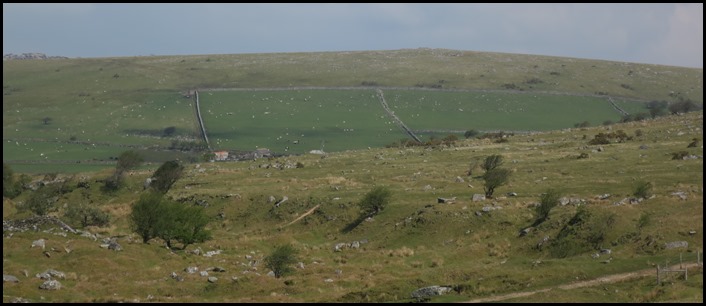 Some eighty square miles,
the moor contains some five hundred holdings with around ten thousand beef cows, fifty five
thousand breeding ewes and a thousand horses and ponies. Most of the moor is a
Site of Special Scientific
Interest
(SSSI), and has been officially designated an Area of Outstanding Natural
Beauty (AONB), a similar status and protection as a National
Park, but for now, the sun is out,
God’s in his heaven and all’s right with the world.
 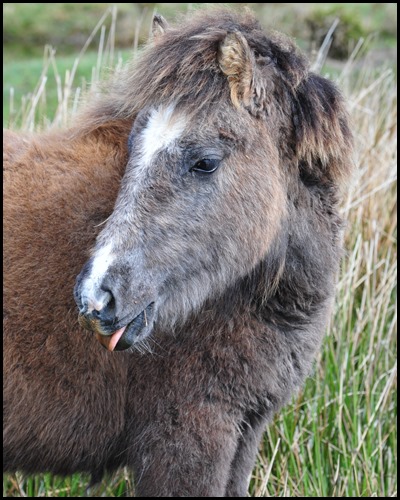 No sooner than we had left the Hurlers
than one of the resident ponies began to smile,
change its mind and poked its tongue out –
charming.
 Tizzy
galloped about with her stick, plunging in the deep pools, she just had to have
her own blog.
 Geoff leads the
way.
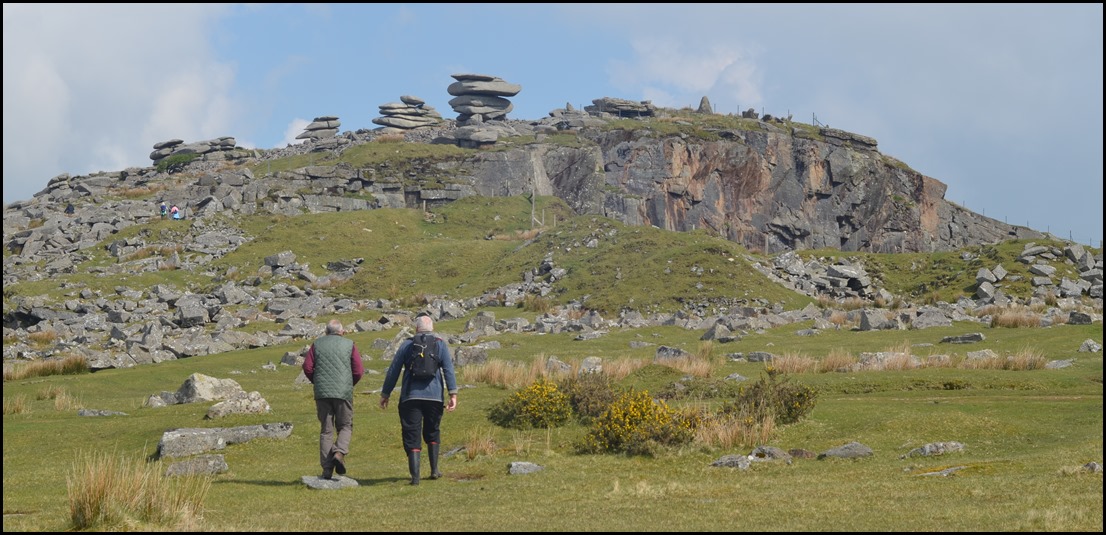 Bear
catches up. Friends since 1977, today - chewing over
stuff.
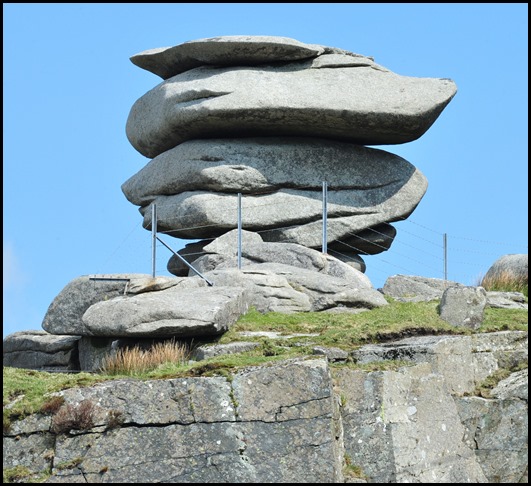 Sabby pointed out the Cheesewring.
The Cheesewring, Keuswask in Cornish, is a granite tor on Stowe's
Hill. It is a natural geological formation,
a rock outcrop of granite slabs formed by weathering. The name
derives from the resemblance of the piled slabs to a "cheesewring", a press-like
device that was once used to make cheese.
Wilkie Collins described the Cheesewring in 1861 in his book Rambles Beyond Railways: If a man dreams of a great pile of stones in a nightmare, he would dream of such a pile as the Cheesewring. All the heaviest and largest of the seven thick slabs of which it is composed are at the top; all the lightest and smallest at the bottom. It rises perpendicularly to a height of thirty-two feet, without lateral support of any kind. The fifth and six rocks are of immense size and thickness, and overhang fearfully all round the four lower rocks which support them. All are perfectly irregular; the projections of one do not fit into the interstices of another; they are heaped up loosely in their extraordinary top-heavy form on slanting ground, half way down a steep hill.
Behind this amazing structure is the Cheesewring Quarry, surrounded by other granite formations, the Cheesewring was threatened with destruction in the late nineteenth century by the proximity of blasting operations, but was saved as a result of ‘people power’. A local legend says that the Cheesewring is the result of a contest between a man and a giant. When Christianity had just been introduced to the British Isles, the giants who lived at the top of the mountains were not happy about it. The saints had invaded their land and were declaring their wells as sacred. One of the larger giants, Uther, was given the task of ridding their land of the Saints. He confronted the frail Saint Tue, who proposed a rock throwing contest. If Uther won, the saints would leave Cornwall. If Saint Tue won, then the giants would convert to Christianity. Uther took his turn first and easily threw a small rock to the top of nearby Stowe's Hill. Tue prayed for assistance, and picking up a huge slab found it was very light. One after the other, they threw their rocks, stacking them up in perfect piles. When the score was twelve stones each, Uther threw a thirteenth stone, but it rolled down the hill. Tue picked up this fallen stone, and as he lifted it, an angel appeared to carry it to the top of the pile of rocks. Seeing this, Uther conceded, and most of the giants decided to follow Christianity after that.
Next Sabby showed us the remains of the home of Daniel Gumb and where to feel for his carvings - his name and Euclid's 47th theorem in the granite. What remains now is only a small part, possibly placed in amongst the finger dumps of the quarry as a shelter to use during blasting.
Daniel Gumb was the most celebrated character to live on the moors. He is best known for his home among the rocks at the Cheesewring, which in Daniel's day was a very remote place. He was born in the parish of Linkinhorne on the 14th of April 1703 and his main occupation of stone-cutter brought him to the Cheesewring hill where he built his home. He found a large, slightly sloping block of granite approximately thirty feet by ten which he excavated beneath to form his roof, lining the sides with stone cemented with lime. Daniel married Thomazine Roberts in 1735, sadly Thomazine died young probably in childbirth, we know she lived with Daniel in his 'house' on the moor because a stone carved 'D. Gumb 1735' was found near the site. It is said to be the date of his third marriage and was part of the door post for the house. Daniel lived here rent free with his wife Florence Brokinshaw in 1743. In this primitive house he brought up at least nine children, it is thought that he had thirteen but some died early. When the Cheesewring quarry was started in the mid 1800’s the home was broken up, many of his offspring had by then emigrated to the Americas. 
Daniel used the roof of his 'house' as an observatory from where he watched the movements of the stars at night. On the surface of the rock he carved mathematical diagrams, one of which survives today. He gained a reputation as a 'Mountain Philosopher' and received a number of distinguished visitors, such as William Cookworthy who was the discoverer of china clay. Daniel died in 1773 or 1776 – depending which source you read, his son John continued his father's trade of stone-cutting but found himself a more comfortable house elsewhere and abandoned 'Gumb's House'. By 1851 two John Gumbs (grandson and great grandson) were copper miners living in Henwood. A very fine slate tombstone can be found placed against the east wall of St Melor's church in Linkinhorne. The tombstone dates from around 1744 and at the foot is the inscription 'Cut by Daniel Gumb'.
Bear and Tizzy at the top of Stowe’s Hill.
The views from up here are simply nature at her best.
Bear took this lovely picture.
Tizzy had a swim then home for a cuppa.
ALL IN ALL WONDERFUL STUNNING |
